The attractor effect, sometimes referred to as the firefly effect, is present in all divisions in the fire department. This effect is a request for resources from either general citizens or the departments themselves, brigade chiefs, sector chiefs present within the same work area, indicating the need for help or the need for more resources to be sent to carry out a direct suppression operation with very direct criteria. The fire behaviour that the alerter sees and the imminent danger that he predicts in his field of vision. However, the attractor effect is not reflected as a part of a fire. Ismael has been able to compare the attractor effect concept and apply it to a part of the fire to differentiate it from the driving flank. Both can suffer from dynamism, but they are terms that will help us to have clearer communications, decisions as well as reducing uncertainty in a wildfire situation.
In this article we will present a series of cases and additional comments without operationally criticising where a driving flank and a distracting flank are possibly identified so that the concepts can be understood. Ismael provides a very valid description of the two types of distractor flanks that can be found in Mediterranean wildfire scenarios.
______________________________________________________________________________________
Since the beginning of time, fire has had a great attractive effect on human beings. The different representations in which fire is portrayed, in the form of flames, have generated great human interest in understanding the what and how of the element of fire. From a professional perspective, wildland fire operatives also try to understand how fire behaviour, interacting with different environmental factors, causes variations in the linear intensity of a fire front, the characteristics of the flames (height, width and length) and the rate of spread and growth. At the same time, they try to understand how different flame representations influence perimeter morphologies across the landscape, which can be classified into wind-driven, topography or terrain-driven, fuel-driven (convective) fires and the different combinations between them. This gives place to a new concept within the broad vocabulary of the wildland fire community: Distractor flank.
Distractor flank: Is the intermediate part of the wildland/rural fire, which is not a strategic priority, but can generate an attractor effect on resources. It can be divided into:
- Distractor flank with driving flank behaviour
- Distractor flank with relative proximity to living beings, property and special protected woodland areas
- Distractor flank with driving flank behaviour: This is the flank of a wildfire that behaves intensely and rapidly, but is not a priority on a strategic level. If a good reading of the scenario is not carried out, it is possible to make the mistake of allocating too many resources where they are not needed. An example of this is the Casablanca wildfire in 2023 (Chile), where the left flank, with a westerly wind, was anchored within a long leeward wind. The upslope runs with head behaviour generated an attractor effect typical of leeward-driven fires, where we see that the fire spreads upslope with high intensity within the leeward zone. If we are only able to perceive this activity in the present moment, we will not be able to unmask the reality of the actual moves the fire may make. In such cases, these leeward runs distract us from the potential growths that the right flank may have when it reaches its critical points or accesses direct wind coming out of the leeward boundary.
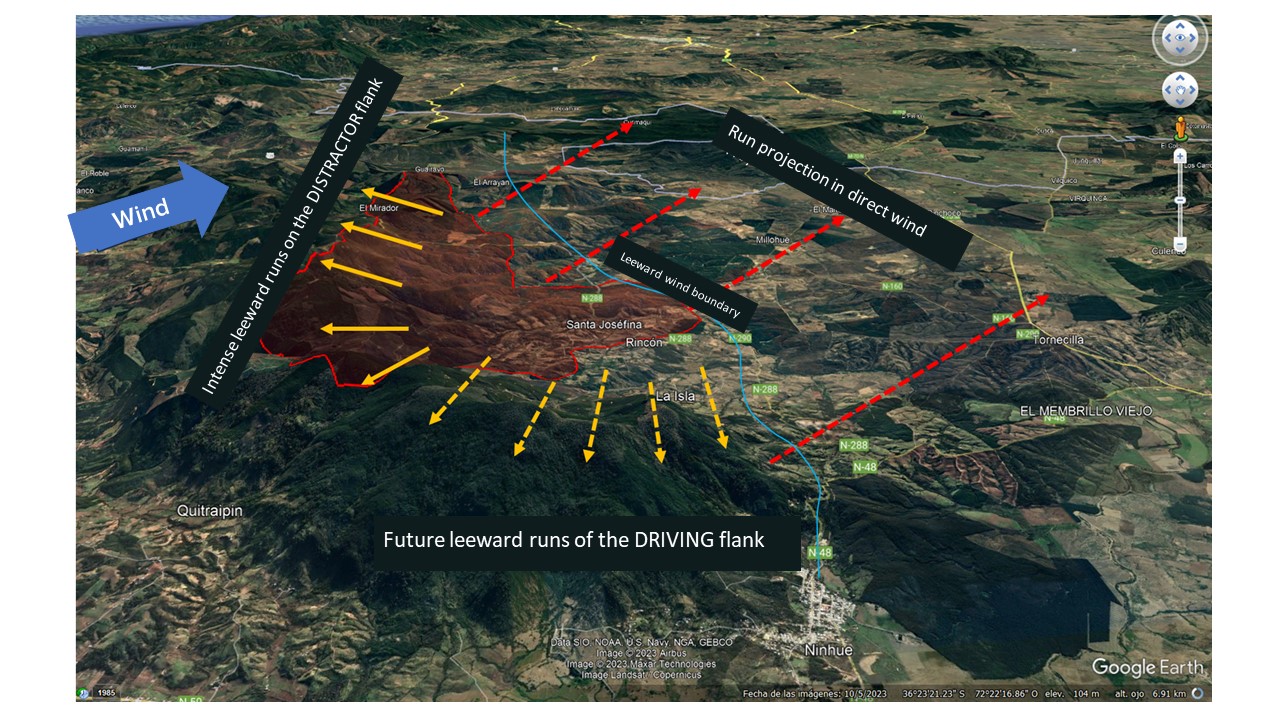
Status report on the Casablanca fire. The wildfire is progressing within a leeward wind zone, generating a lot of smoke and upslope runs within the topography. In this case the left flank is the distractor. Source: CONAF and TEP
Top of the left flank ("distractor flank"). Source: CONAF
Runs on the right flank once it leaves the leeward boundary area (driving flank). Source : CONAF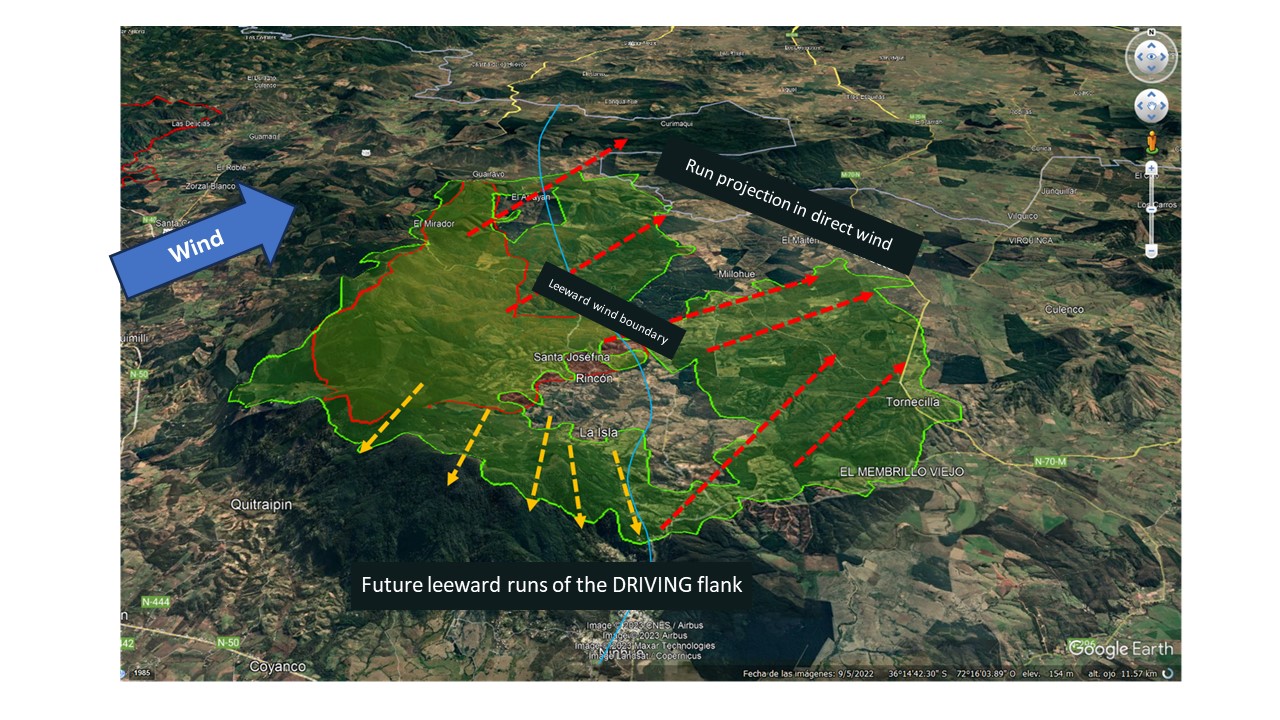
Final perimeter and movements of the Casablanca III wildfire (Chile, February 2023). The spread on the right flank is shown in detail once the fire leaves the leeward zone and enters the direct wind on the flat area. Source: CONAF and TEP
A similar example happened in Oliva (Valencia), a wildfire that started with strong westerly winds with gusts of 70 km/h maximum. The starting point of the fire was anchored in a leewind, generating head behaviour with a slope in its favour. The resources were positioned on the left flank of this leeward wind area, generating greater intensity and rate of spread, but the driving factor of the fire was on the opposite side, in other words, on a sluggish right flank, which, when leaving the limit of the leeward wind, made the transition to a powerful head in direct wind that reached the full potential that the fire was capable of.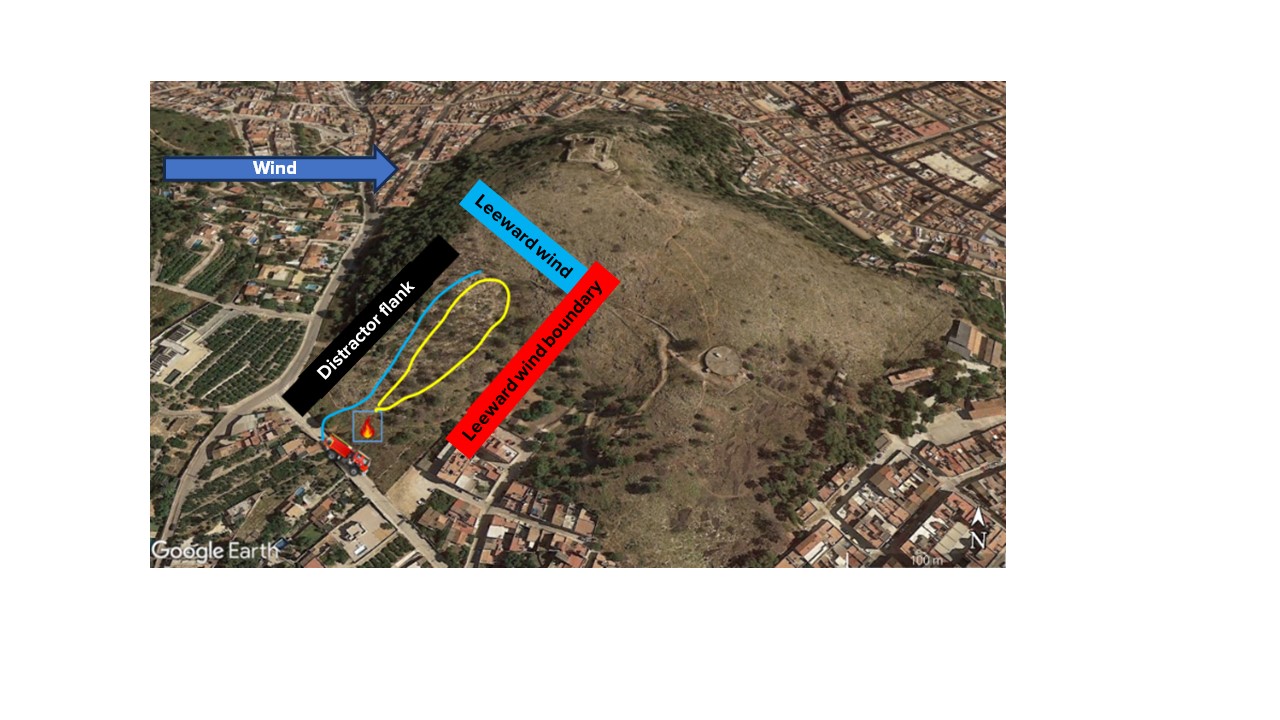
Initial perimeter of Oliva and first action of laying a hose line on the west flank (left flank and distractor). Source: Ismael Sais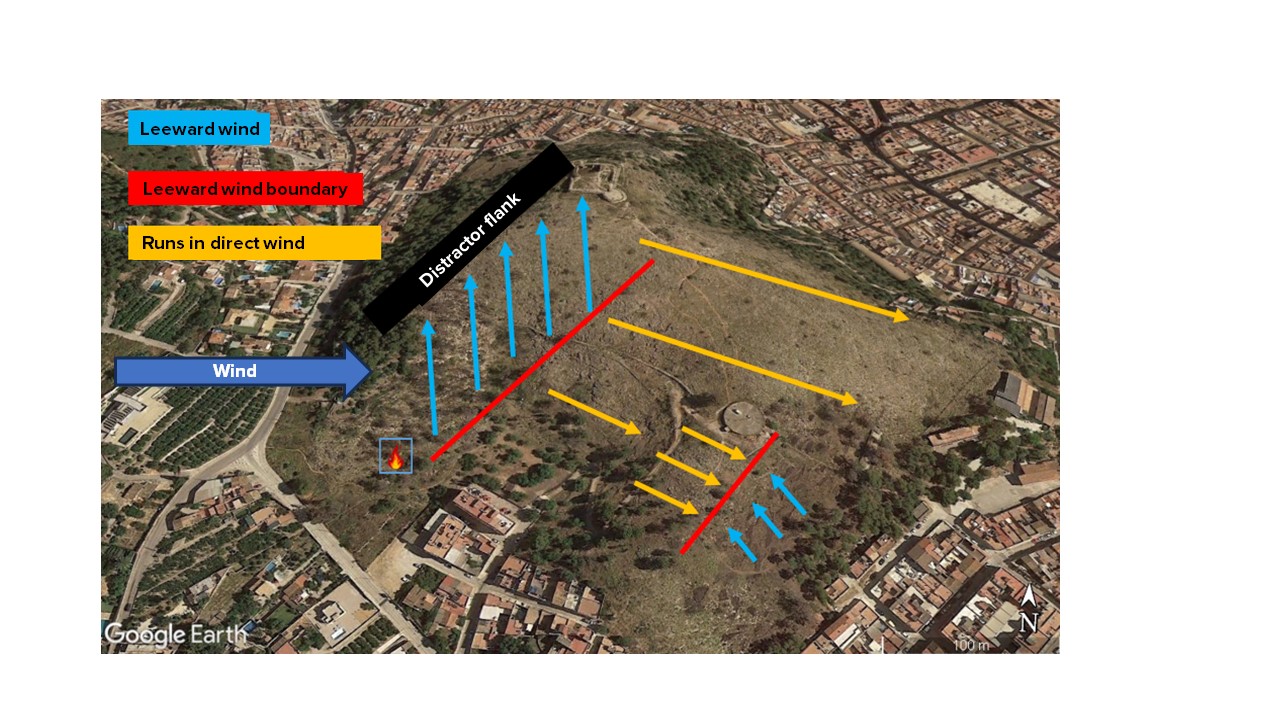
Ignition point, wind and leewind dynamics on the total potential of the Oliva wildfire (Valencia). Source: Ismael Sais
- Distractor flank relatively close to living beings, property and special protected woodland areas: This is the flank of the wildfire that, although it is not a priority on a strategic level and does not show driving flank behaviour, it is close to lives, property and areas of special protection. Due to social pressure or lack of vision of the operative, an attractor effect of resources is produced.
In this case in Alzira, the distractor flank may have been the result of multiple calls to the emergency services by the local population and the proximity to the flames. In large wildfires with widely spaced flanks, this concept becomes more important as there will be different warnings with different intensities and perceptions of danger from the public, depending on the fire behaviour that the alerter is seeing. The alerter may see flame lengths of 3m and report imminent danger to their property, but the reality on the other flank or at the head of the fire may be different, with much more aggressive and dangerous behaviour. Only situational awareness and a global vision of the fire will allow us to rule out and avoid this attractor effect that occurs, in this case, due to the public.
Clearly in Alzira, the right flank that is the driving flank, is the one that keeps spreading the fire upslope again and again towards the higher part of the mountain range. This effect can be clearly seen in the isochrones and the growth of the fire.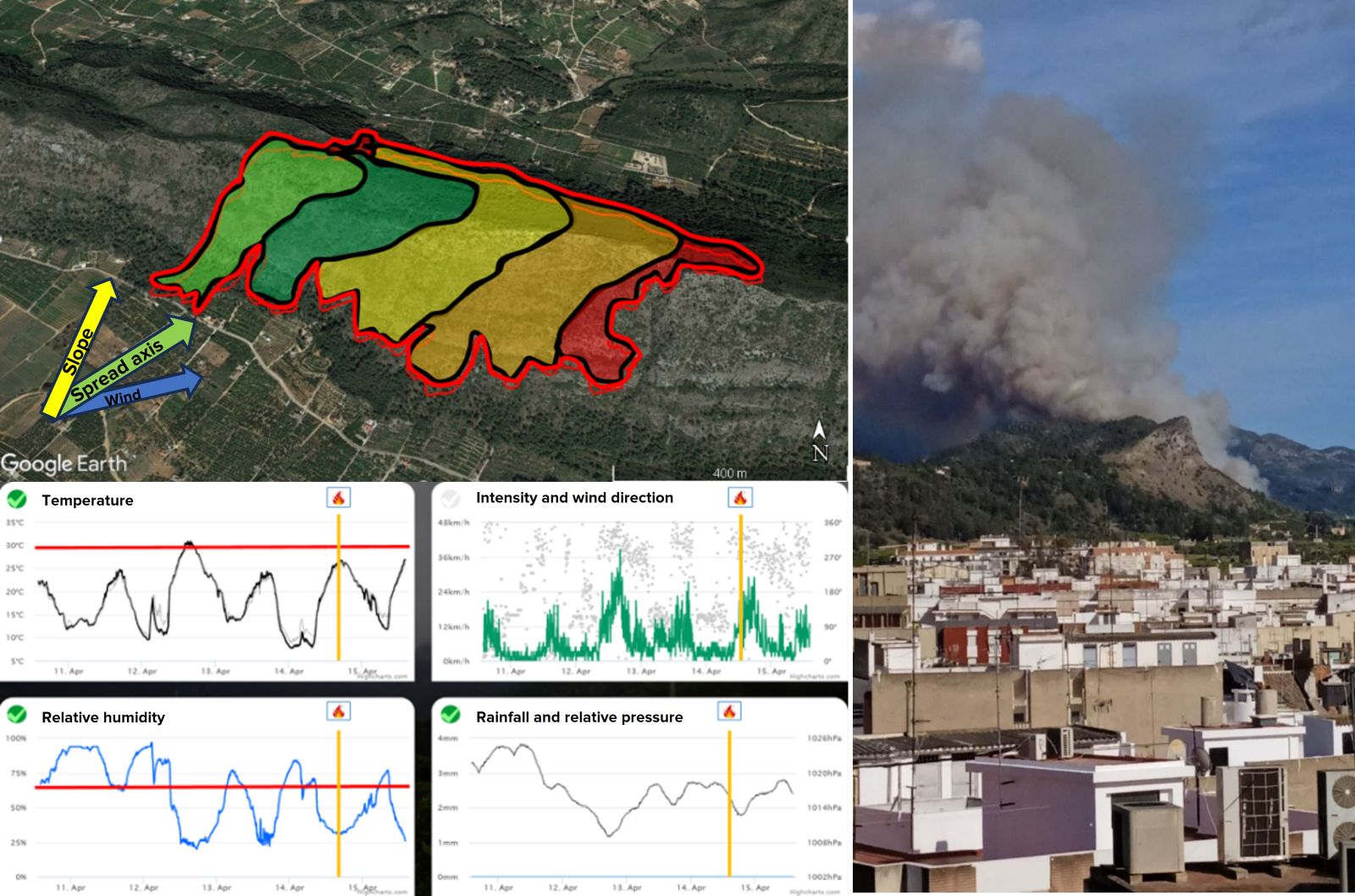
Alzira wildfire isochrones (April 2023). Initial photograph from the closest town and weather situation where the fire took place. Source: UT902 and Ismael Sais 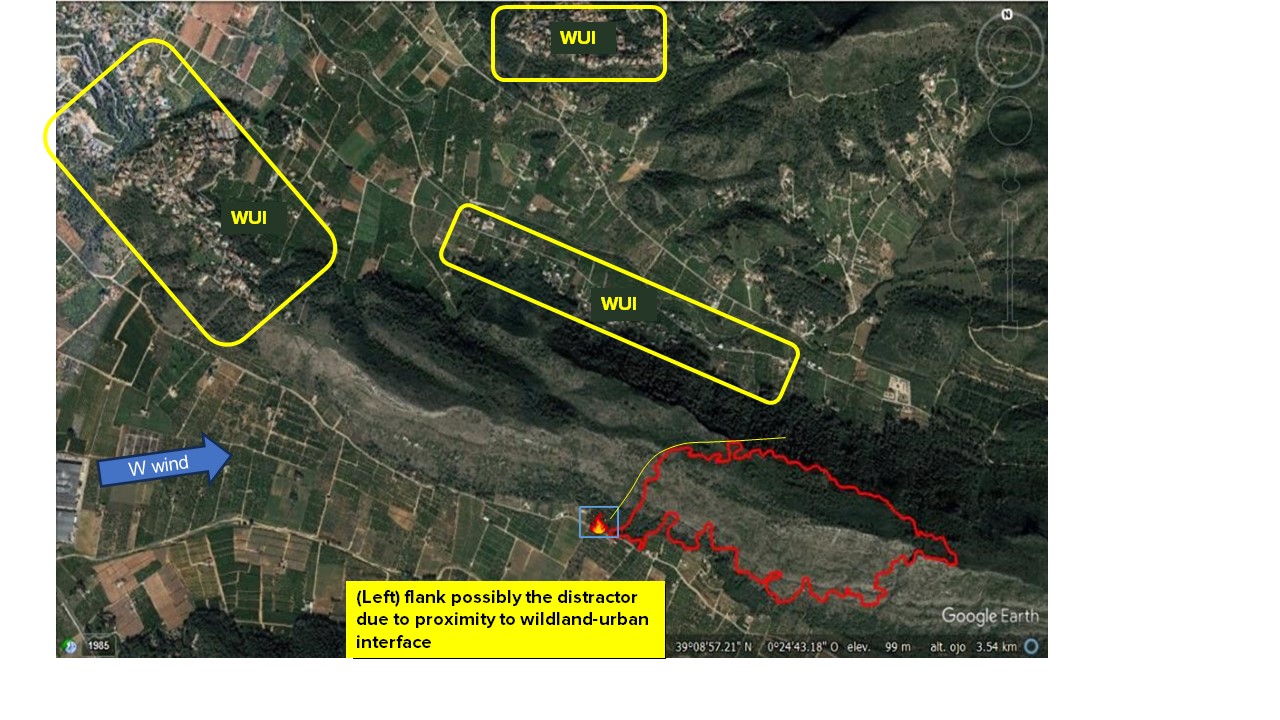
Final perimeter of the Alzira wildfire with a westerly wind. The different compact and scattered interface areas are highlighted, from which there is a direct view of the fire plume and fire behaviour. Source: UT902 and Ismael Sais
This effect also occurs within the same sectors of wildfires, due to crew members requesting more resources to carry out operations, when the overall view of the fire does not allow resources to be placed where the demand is being generated. These locations almost always coincide with the places where the wildfire is developing runs, fast movements or excessive amounts of smoke. Sometimes it may coincide with the main tactical objective of the fire, but sometimes it does not, sometimes the most important tactical objective is to prevent spread at a tail that simply shows 1-2m flame length behaviour, out of alignment, and does not draw the attention of resources and the population. This requires decisiveness and clear leadership in order to focus attention and tactics on those areas that are really strategically important and not on those that generate the most attention or media hype. To understand this process, which can be classified as a psychological attraction effect (attractor effect), is to be able to focus on what is really important and on what will allow us to block out the media attention that can be generated by the fire.
Another example of similar characteristics but with a higher importance of maintaining a strategic vision can be found in the #Montitxelvowildfire.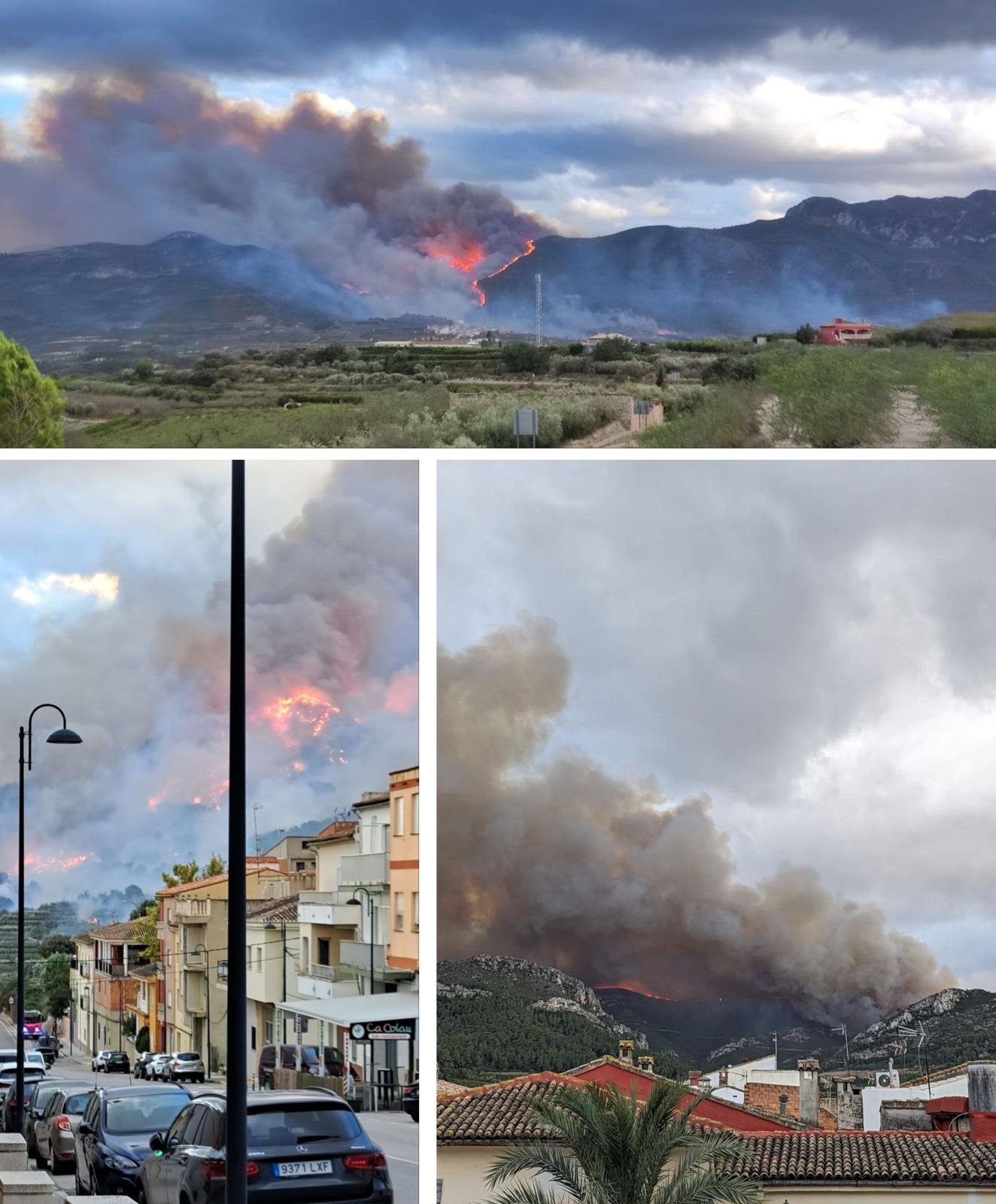
View of the northern (left) flank of the fire from the most inhabited areas. Villages on the left flank: Rugat, Ayelo de Rugat, Montitxelvo, Benicolet, Terrateig, Lugar Nuevo de San Jerónimo, Almiserat, Castellonet, Rótova. Other villages at the head and southern flank: Palma de Gandia, Ador , La Corona, Villalonga, Lorcha. Source: UT902
The proximity of the left flank and the view from the villages in the lower part of the mountain invite reports of imminent danger due to the number of calls and people who are witnessing the fire's behaviour.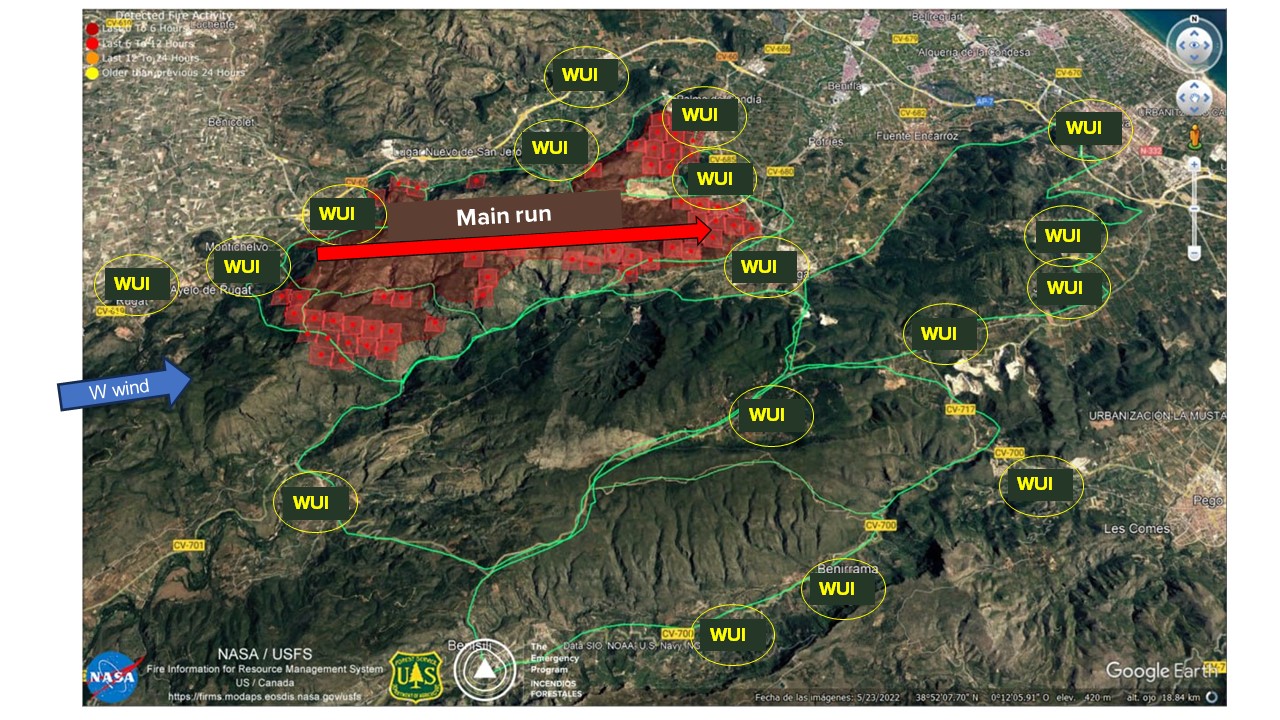
Active perimeter, potential polygons and WUI areas that can generate attractor effect by direct observation, calls and photographs on the north or left flank of the Montitxelvo wildfire (November 2023). Source: UT902 and TEP
However, after the first analysis from #UT902 it is evident that the importance is on the southern flank, since it is the one that can give it access to its full potential as a large wildfire. It is a clear example of how the position, the vision and the amount of photographs and warnings can distract us and make us focus on a flank that has no more future than what the fire is already doing out of suppression capacity, obviously there are specific needs to evacuate and position WUI defence operations depending on how and where these housing estates or buildings are located.
Furthermore, knowing how to read the fire based on previous wildfires and the current weather situation, as the Valencian analysis service #UT902 did, we must be able to unmask and avoid the attraction or distraction that this northern flank can generate due to the media attention that it can generate. The key reading in the movements and steps that the fire has to take to reach its maximum potential shows us the opportunities that we will have in our suppression strategy.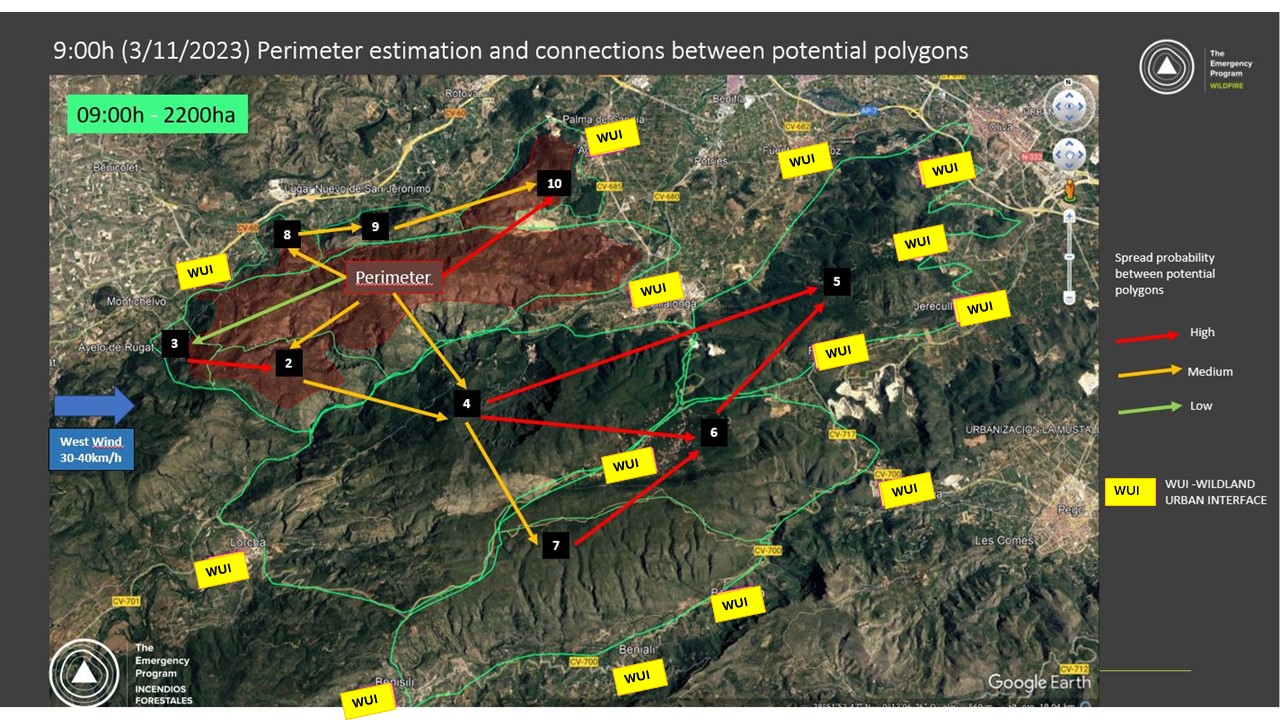
Provisional perimeter, proposal of potential polygons and connections between polygons in the Montitxelvo wildfire. Source: UT902 and TEP.
Despite all the various cases, this does not mean that we should not carry out operations on the distractor flank. It should also be noted that the distractor flank also has its expiration window. Take the Alzira (Valencia) wildfire, for example, where the distractor flank (west flank), with the entry of the sea breeze the following day, can turn what was a relatively easy flank to work on into an intense and rapid head, which now threatens the wildland-urban interface area. Therefore, this concept tries to explain and make people understand that operations and the use of resources must be carried out in accordance with the reality of the scenario, taking into account the possibilities and realities of the future, both in terms of location and fire behaviour. However, it is important to be sensitive and avoid over-scaling resources in response to the real needs of the fire, as such over-scaling will affect those parts of the fire that are a strategic priority. The distractor flank is a concept that we can use to calculate the priority and order of implementation of our tactical objectives in a fire with a defined strategy.
However, the distractor flank may be easy and can be tackled with few resources. If so, it will be the first to be worked on (order), but it won't be a priority. In a case where the distractor is the first to be worked because of its ease, we will be eliminating excessive attention of the fire in order to focus on the driving factor and the most important tactical objective for its resolution. These two sub-definitions broaden the spectrum of what a distractor flank can entail. It all boils down, as TEP (The Emergency Program) rightly explains, to what the fire can do within what it wants to do. This is where we start being proactive and, by identifying the tactical objectives, we will begin to implement what we can do within what we want to do, and one of its fundamental pillars begins by differentiating what is a priority from what is not, even though at first glance it may appear to be the opposite.
The Emergency Program in collaboration with Ismael Sais Llácer, whom we thank for his contribution and also share the link to his social networks:
Instagram: saisismael82 / X: TotBomber / Telegram Channel
Remember that you can also join our Telegram channel free of charge to keep up to date with the latest news! TEP Telegram channel
